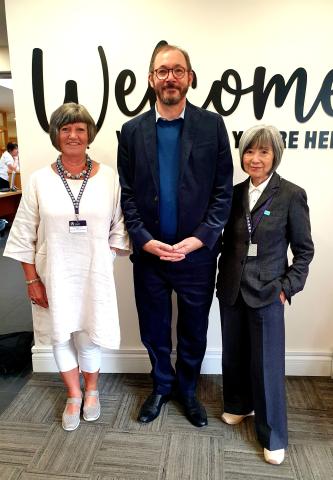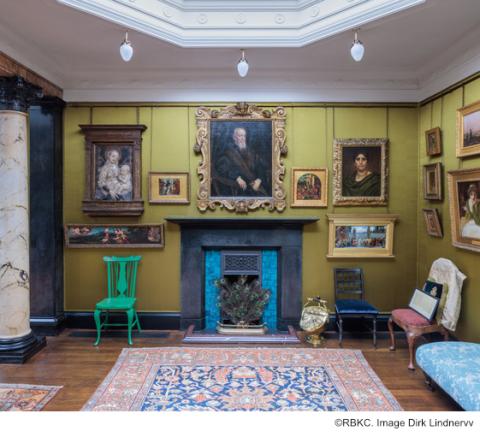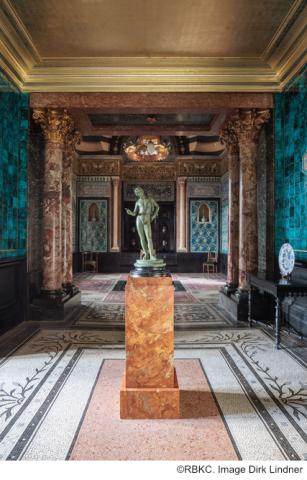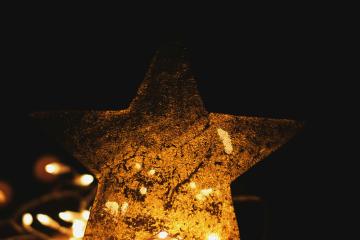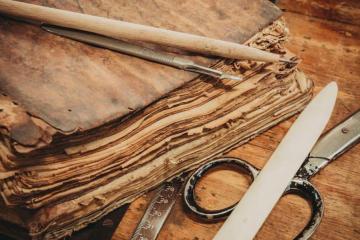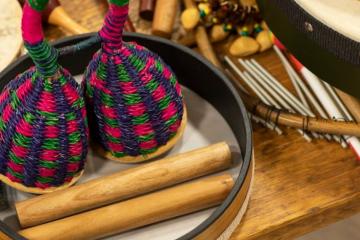Year in Review: A Remarkable Year for The Arts Society Mallorca
A Palace of Art: Frederic Leighton's Studio House
A Palace of Art: Frederic Leighton's Studio House
19 Oct 2025
For the October meeting of the Arts Society Horsham, Daniel Robbins guided us on a grand tour of Leighton's studio house, his Palace of Art, his treasured collections, his rise to fame as well as a glimpse into his enigmatic personality.
Frederic Leighton was born in 1830 of wealthy family and trained in Frankfurt and Paris in pursuit of a career as artist. By the time he died in 1896, he had been ennobled — Lord Leighton — and had held many accolades including becoming president of the Royal Academy of Arts and enjoyed royal patronage. From his early success with the 18 feet long "Cimabue's Celebrated Madonna is Carried in Procession through the streets of Florence", he began amassing an impressive collection of art treasures from his travels in Europe, Middle East and Far East, all carefully curated and displayed at his Holland Park home which he designed and built with architect Aitchison. From the start, the house was to be a showcase for Leighton's exotic art collection as well as to fulfil his vision of how an artist should live. The opulent interior was dressed to impress! Visitors among his eminent artist friends such as George Frederic Watts, illustrious neighbours such as Valentine Cameron Prinsep and members of the public or press would have been enchanted by the Arab Hall with its authentic Islamic decor and works of art, and the Narcissus Hall with the statue of Narcissus from Pompeii. The Staircase Hall, decorated with Egyptian tiles, Japanese Satsuma vases and other exotic objets d'art, leads to the large Studio with high ceilings and tall windows, all meticulously designed to give a "wow" factor to visitors!
Leighton's early success was not immediately replicated but he gained wide acclaim and success in historical, mythological and religious subjects and a sensuous style of painting drapery — "Flaming June" being his most famous which, ironically, eclipsed Leighton's own reputation. However, for someone with such a prominent reputation and royal connections, and despite his huge efforts in promoting himself as an artist, Leighton remained an enigma to the end. His last words from his small bed in his modest bedroom were "give my love to the Academy" but the rest was conducted in German with his sister! Perhaps Leighton did leave us a clue with the statue of Narcissus: that the artist had fallen in love with himself and created a gilded palace to house his great ego? One also suspects that a 21st century Leighton would most certainly be an early adopter of Facebook, Instagram and has regular features in Hello! Magazine!
JOIN OUR MAILING LIST
Become an instant expert!
Find out more about the arts by becoming a Supporter of The Arts Society.
For just £20 a year you will receive invitations to exclusive member events and courses, special offers and concessions, our regular newsletter and our beautiful arts magazine, full of news, views, events and artist profiles.
FIND YOUR NEAREST SOCIETY
MORE FEATURES
Our Heritage Volunteers are working as part of a team working on the rewarding book restoration proj


